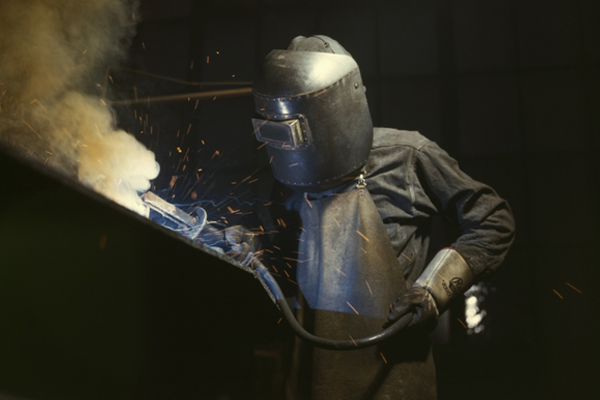|
Mild Steel Welding Fume Reclassified As A Human Carcinogen
Mary Cameron, Occupational Hygiene Team Leader at SOCOTEC, gives an overview of the changes and why control measures are fundamental to protecting employee health and safety. As a result of The International Agency for Research on Cancer (IARC) releasing new scientific evidence that exposure to mild steel welding fume can cause lung cancer and possibly kidney cancer in humans, mild steel welding fume has been reclassified as a human carcinogen by the Workplace Health Expert Committee. The Health and Safety Executive (HSE) has released a safety alert for those undertaking welding activities, including mild steel, in any industry. In order to protect workers, the HSE is strengthening their enforcement of cancer-causing welding fumes with immediate effect.
Welding fume contents and risks
Welding fume is a complex and varying mixture of airborne particles, vapours and gases which arise from the thermal manipulation of metal materials. The fume particles formed from the vaporisation of molten metal as well as by-product vapours and gases may cause a wide range of adverse health effects. Welding on painted, plated, galvanised or degreased metals may cause additional inhalation exposure concerns.
Depending on the job’s specific circumstances, physical hazards should also be considered such as heat stress, EMF and noise exposure. As with any hazardous process, all aspects should be considered when undertaking the risk assessment and control measures implemented accordingly to reflect the level of risk.
What control measures do I need to implement?
It must be understood that general ventilation does not achieve the essential welding fume exposure control. Control of exposure to carcinogenic fumes requires more effective engineering controls, such as local exhaust ventilation (LEV), which allows for at-source fume extraction thus preventing welding fume from spreading into the surrounding workplace and entering the worker’s breathing zone.
Indoor welding tasks require the use of LEV. If LEV is unable to control fume capture then Respiratory Protective Equipment (RPE) is also required. Appropriate RPE should be also provided for welding outdoors. Regardless of the duration of exposure, the HSE will no longer accept any welding undertaken without suitable exposure control measures in place as there is no known level of safe exposure. Adequate exposure control measures are a necessity and for good reason.
Illness caused by welding fume exposure
WeldingWelding fume inhalation has long since been understood to be hazardous to health, even before the most recent HSE announcement classifying of mild steel welding fume as a human carcinogen.
Welders are more prone to lung infections, reduced lung function and may experience irritation of the throat and lungs. Welders may also experience flu like symptoms after welding (metal fume fever) which is usually linked to welding on galvanised metals, as well as mild steel.
Adverse health effects from exposure to manganese (present in mild steel welding fume) may include neurological effects similar to Parkinson’s disease.
Welding stainless steel can produce hexavalent chromium which is a lung carcinogen. Stainless steel fume may also contain chromium oxide and nickel oxide – both of which can cause asthma. Iron is present in most forms of welding fume and may cause siderosis which is the deposition of iron oxides in lung tissue.
This vast array of health effects is staggering and so the need for effective exposure controls is critical:
Suitable control measures must be applied, regardless of welding duration and including outdoors welding;
The employer must ensure welders are suitably instructed and trained in the use of any exposure controls (e.g. LEV, RPE);
All engineering controls should be correctly used, suitably maintained and subject to thorough examination and testing (if required under COSHH Regulation 9) and RPE must be subject to an RPE programme.
The recent change in enforcement expectations for control of welding fume exposure should be reflected in the risk assessment and in the current control measures on site. Control measures should be replaced or be improved upon if required as per the risk assessment and in order to reflect the reclassification of mild steel welding fume as a human carcinogen.
Ensuring compliance
Occupational hygienists identify hazardous agents (physical, chemical and biological) in the workplace that can cause occupational disease or discomfort. The aim is to evaluate the extent of the risk due to exposure and recommend the best controls to prevent ill-health. At SOCOTEC, our occupational hygienists often attend metal fabrication sites to undertake workplace exposure monitoring (including welding fume exposure) and control measure evaluations.
Occupational hygienists can help employers in their COSHH compliance programme by assessing the worker’s exposure to hazardous substances and also by undertaking examination of control measures in place to ensure continued performance or recommend improvements. Occupational hygienists are there to assess, advise and improve upon workplace hazards. SOCOTEC’s understanding in the risks involved in a wide variety of workplace activities makes us highly capable to recommend effective exposure prevention and controls measures.
Source: https://www.shponline.co.uk
|



